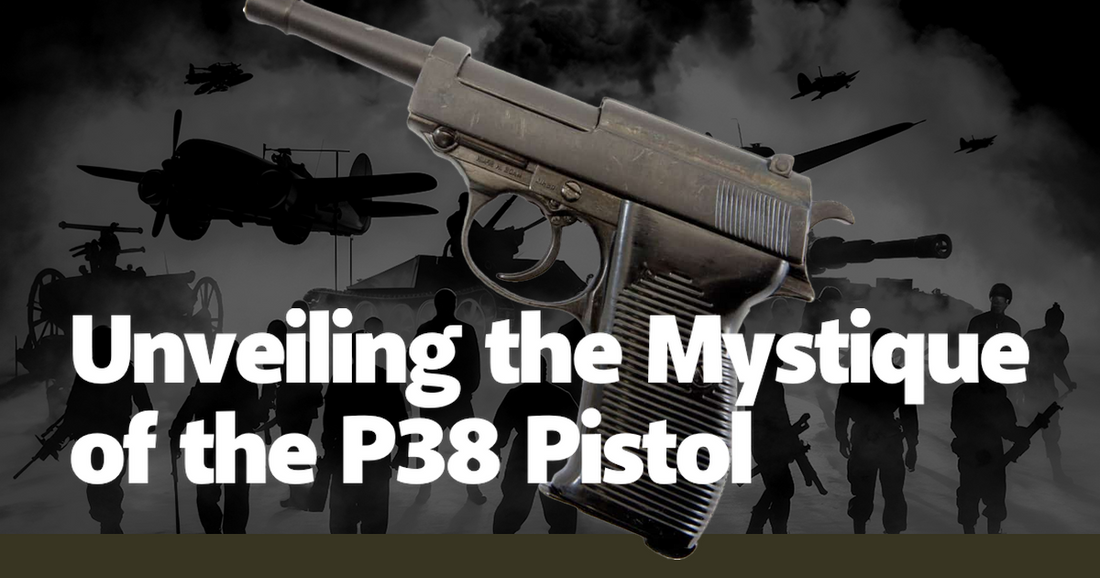The P38 pistol, a marvel of German engineering, stands as one of the most iconic firearms of the 20th century. Developed by Walther Arms during the tumultuous era of World War II, the P38 was designed to replace the Luger P08, which had been the standard sidearm of the German military since World War I. The P38's innovative design and robust functionality set it apart from its predecessors and contemporaries, making it a favorite among soldiers and firearm enthusiasts alike. Its development was a direct response to the need for a more reliable, easier-to-manufacture pistol that could withstand the rigors of war.
One of the defining features of the P38 is its double-action/single-action (DA/SA) trigger mechanism, a revolutionary design at the time. This allowed the pistol to be carried with a round in the chamber, hammer down, and safety off, providing a quick and safe draw. The DA/SA mechanism meant that the first shot could be fired in double-action mode, with subsequent shots in single-action, offering a balance between safety and speed. This feature greatly influenced the design of future military and law enforcement pistols, cementing the P38's legacy in firearm history.
The P38's construction also reflected the need for efficiency and durability. Made from high-quality steel, it featured a locked-breech, short-recoil action that reduced felt recoil and improved accuracy. The pistol's design incorporated a fixed barrel, which contributed to its reputation for precision shooting. Soldiers who carried the P38 often praised its reliability in harsh conditions, from the freezing winters on the Eastern Front to the sweltering heat of the North African deserts. Anecdotes from veterans frequently highlight the P38's ability to function flawlessly even when caked with mud or sand, a testament to its robust engineering.
In addition to its functional attributes, the P38 carried a certain mystique, partly due to its association with the German military. The pistol became a symbol of the Wehrmacht, often seen in the hands of officers and elite troops. Its distinct profile, with the angular lines and exposed barrel, made it instantly recognizable. This visual identity was further cemented by its frequent appearance in wartime propaganda and post-war media, where it was often depicted as the quintessential German sidearm. The P38's presence in films, books, and video games has only added to its legendary status, making it a sought-after collector's item.
The P38's influence extended beyond Germany's borders, impacting firearm design worldwide. After the war, many countries, including the United States, studied the P38's design to improve their own sidearms. The Beretta 92, adopted by the U.S. military as the M9, owes much of its design philosophy to the P38, particularly the DA/SA trigger system and the open-slide design. This cross-pollination of ideas underscores the P38's importance in the evolution of modern handguns, marking it as a pivotal piece of military history.
Collectors and historians often seek out the P38 for its historical significance and engineering excellence. Original wartime models, especially those with matching serial numbers and intact markings, are highly prized. These pistols tell the story of their journey through history, from the assembly lines in Nazi Germany to the battlefields of Europe and beyond. Each P38 carries with it the scars and stories of its past, making it more than just a weapon but a tangible link to a bygone era.
The P38's legacy is also preserved through the efforts of reenactors and enthusiasts who meticulously restore and maintain these pistols. Their dedication ensures that the P38 continues to be appreciated not only as a piece of history but also as a functional firearm. Shooting a P38 today offers a unique experience, connecting the shooter to the past and providing a glimpse into the lives of those who once wielded it. The pistol's balance, accuracy, and distinctive trigger pull are testaments to its enduring design.
In conclusion, the P38 pistol is more than just a weapon; it is a symbol of innovation, resilience, and historical significance. Its design influenced countless future firearms, and its presence on the battlefields of World War II left an indelible mark on history. The P38's mystique continues to captivate collectors, historians, and firearm enthusiasts, ensuring that its legacy will endure for generations to come. Through its combination of engineering excellence and historical importance, the P38 remains a testament to the ingenuity and complexity of human conflict and invention.

